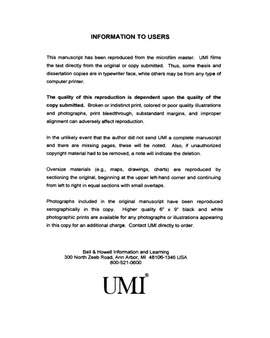| dc.contributor.advisor | Striz, Alfred G., | en_US |
| dc.contributor.author | Arrieta, Albert Joseph. | en_US |
| dc.date.accessioned | 2013-08-16T12:18:07Z | |
| dc.date.available | 2013-08-16T12:18:07Z | |
| dc.date.issued | 2001 | en_US |
| dc.identifier.uri | https://hdl.handle.net/11244/281 | |
| dc.description.abstract | Damage tolerance analysis (DTA) was considered in the global design optimization of an aircraft wing structure. Residual strength and fatigue life requirements, based on the damage tolerance philosophy, were investigated as new design constraints. In general, accurate fatigue prediction is difficult if the load environment is not known with a high degree of certainty. To address this issue, a probabilistic approach was used to describe the uncertain load environment. Probabilistic load spectra models were developed from flight recorder data. The global/local finite element approach allowed local fatigue requirements to be considered in the global design optimization. AFGROW fatigue crack growth analysis provided a new strength criterion for satisfying damage tolerance requirements within a global optimization environment. Initial research with the ASTROS program used the probabilistic load model and this damage tolerance constraint to optimize cracked skin panels on the lower wing of a fighter/attack aircraft. For an aerodynamic and structural model similar to an F-16, ASTROS simulated symmetric and asymmetric maneuvers during the optimization. Symmetric maneuvers, without underwing stores, produced the highest stresses and drove the optimization of the inboard lower wing skin. Asymmetric maneuvers, with underwing stores, affected the optimum thickness of the outboard hard points. Subsequent design optimizations included von Mises stress, aileron effectiveness, and lift effectiveness constraints simultaneously. This optimization was driven by the DTA and von Mises stress constraints and, therefore, DTA requirements can have an active role to play in preliminary aircraft design. | en_US |
| dc.format.extent | xiii, 222 leaves : | en_US |
| dc.subject | Airplanes Wings. | en_US |
| dc.subject | Airplanes, Military. | en_US |
| dc.subject | Fighter planes. | en_US |
| dc.subject | Airframes Fatigue. | en_US |
| dc.subject | Airplanes Design and construction. | en_US |
| dc.subject | Engineering, Aerospace. | en_US |
| dc.subject | Engineering, Mechanical. | en_US |
| dc.title | Multidisciplinary design optimization of a fighter aircraft with damage tolerance constraints and a probabilistic model of the fatigue environment. | en_US |
| dc.type | Thesis | en_US |
| dc.thesis.degree | Ph.D. | en_US |
| dc.thesis.degreeDiscipline | School of Aerospace and Mechanical Engineering | en_US |
| dc.note | Source: Dissertation Abstracts International, Volume: 62-02, Section: B, page: 0943. | en_US |
| dc.note | Adviser: Alfred G. Striz. | en_US |
| ou.identifier | (UMI)AAI3004874 | en_US |
| ou.group | College of Engineering::School of Aerospace and Mechanical Engineering | |
